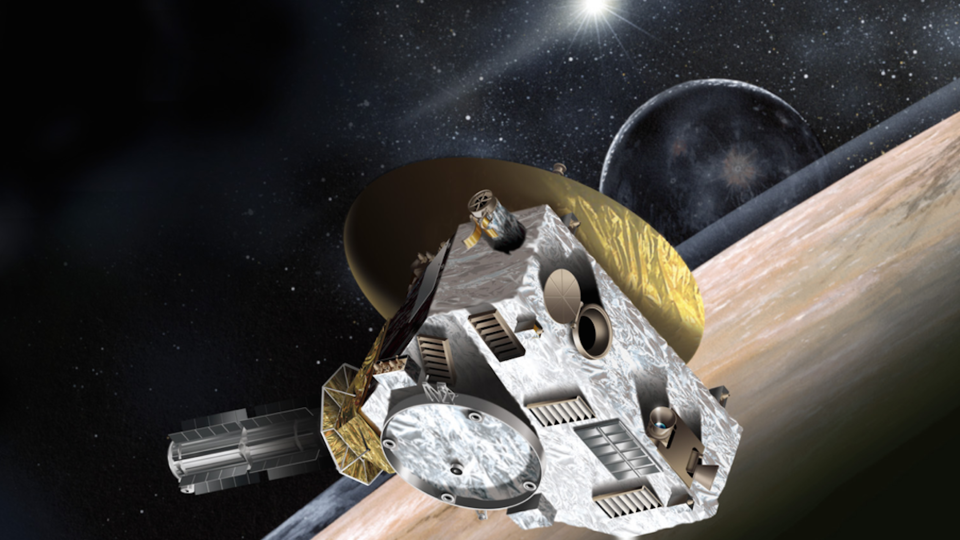Science News
Exploring New Horizons

After a voyage of nearly four billion miles (six billion kilometers, give or take), the New Horizons spacecraft will encounter the Pluto system on Bastille Day next year—that’s July 14, 2015. I say the Pluto system because it ain’t just the dwarf planet out there. We’ve known about Pluto’s giant moon (or companion planet) Charon for several decades, and in the last several years, we’ve discovered four more moons in orbit around this tiny world.
This past Wednesday, during the annual meeting of the American Geophysical Union here in San Francisco, a special session focused on the science objectives of NASA’s mission to this distant goal.
The intriguing challenge of the New Horizons mission is that it’s an encounter mission, which means that it whizzes past Pluto and its moons a hundred times faster than a commercial airline makes an intercontinental flight. Imagine trying to make careful science observations when you’re literally flying past the thing you’re trying to observe! This kind of work requires careful planning to make sure the mission can do all its important work in a very short amount of time.
Adding to the difficulty, the Pluto system is aligned almost perpendicular to the direction that New Horizons is traveling… That means that the spacecraft is almost like a dart being flung at a target, where the orbits of Pluto’s moons are like the rings circling the bull’s eye. New Horizons will zip through the orbital plane quickly, making all its observations in quick succession.
New Horizons has already woken up from its mid-flight slumber in order to prepare for July’s encounter, and it will of course start making observations over the next several months. But the mission doesn’t end when the spacecraft speeds by Pluto! New Horizons will turn around to watch the planet and its moons recede from view, and a carefully-planned trajectory will cause it to eclipse both Earth and the Sun from the perspective of the spacecraft. These eclipses will allow it to make observations of Pluto’s atmosphere—as well as Charon’s.
Obviously, a mission like this requires a lot of advance planning, and as specialist after specialist filed to the podium on Wednesday to present each piece of the complex puzzle, I was left in awe of the minutae that they addressed. A few favorite observations…
When they scheduled the activities of the mission more than a decade ago (it was approved in 2001 and launched in 2006), the mission scientists included “T.B.D.” items in their agenda. Knowing that new discoveries and better data would inform future choices, they made room for judicious decision-making.
And in one previsualization of a series of observations, the computer animation showed three Plutos being observed by the instrument. By way of explanation, Randy Gladstone of the Southwest Research Institute noted that the three images represented the uncertainty in Pluto’s position. We’ve mapped its orbit in great detail, but we’re still not 100% exactly where the planet will be when New Horizons arrives. Yet we know it accurately enough to plan the mission.
The overall feeling in the room was that of tremendous excitement. No one (not even these experts) knows exactly what to expect when New Horizons arrives at Pluto. But they know they’re going to be surprised!
Ryan Wyatt is the director of Morrison Planetarium and Science Visualization at the California Academy of Sciences.